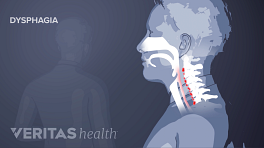Drugstores often have a whole shelves dedicated to topical pain relievers to treat arthritis and other musculoskeletal pain. These products typically fall into one of four categories: counterirritants, salicylates, capsaicin, or lidocaine.
In This Article:
- Topical Pain Relief for Arthritis
- Over-the-Counter Topical Arthritis Pain Relief
- Prescription Topical Arthritis Pain Relief
- Uncommon Prescription Topical Analgesics for Arthritis Pain
Counterirritants
Topical counterirritants do not treat arthritis pain; instead, they attempt to change the way arthritis pain is perceived. When applied, counterirritants irritate the skin and create a temporary hot and/or cold sensation. These sensations can interrupt pain signals to the brain, essentially distracting the brain from pain.
Menthol, eucalyptus, camphor, and wintergreen are all counterirritants. Some products contain more than one counterirritant ingredient. For example, Icy Hot and Tiger Balm Arthritis Rub both list menthol and camphor as active ingredients.
Counterirritants may provide modest pain relief but are not considered effective for relieving severe pain.
Counterirritants: potential side effects
These products tend to have strong odors. Their side effects tend to be minor, such as local skin irritation where they were applied.
See What Pain Management Approach Works Best?
Salicylates
Chemically similar to aspirin, salicylates have a mild anti-inflammatory effect. Examples of topical salicylates include many Aspercreme and Sportscreme products.
- Topical salicylates may help reduce temporary acute pain, but it is less clear whether or not they effectively reduce chronic arthritis pain. 1 Mason L, Moore RA, Edwards JE, McQuay HJ, Derry S, Wiffen PJ. Systematic review of efficacy of topical rubefacients containing salicylates for the treatment of acute and chronic pain. BMJ : British Medical Journal. 2004;328(7446):995. doi:10.1136/bmj.38040.607141.EE. , 2 Derry S, Matthews PR, Wiffen PJ, Moore RA. Salicylate-containing rubefacients for acute and chronic musculoskeletal pain in adults. Cochrane Database Syst Rev. 2014 Nov 26;11:CD007403. doi: 10.1002/14651858.CD007403.pub3. Review. PubMed PMID: 25425092.
- Unlike counterirritants, salicylates can be odor-free.
- Salicylates are often used in combination with counterirritants (not odor free).
Products that contain both counterirritants and salicylates include Thera-gesic creams and Bengay Ultrastrength Cream.
Salicylates are a mild non-steroidal anti-inflammatory drug (NSAID); however, the term “topical NSAIDs” usually refers to more potent topical NSAIDs available only by prescription.
Salicylates: potential side effects
People should talk to a health care professional before using topical salicylates if they are sensitive to aspirin or are taking a medication that might interact with salicylates, such as warfarin (Coumadin).
Capsaicin (Capsicum Frutescens)
Topical capsaicin products treat pain due to osteoarthritis, rheumatoid arthritis, and other painful musculoskeletal conditions. 3 Laslett LL, Jones G. Capsaicin for osteoarthritis pain. Prog Drug Res. 2014;68:277-91. Review. PubMed PMID: 24941673. , 4 Stanos SP, Galluzzi KE. Topical therapies in the management of chronic pain. Postgrad Med. 2013 Jul;125(4 Suppl 1):25-33. Review. PubMed PMID: 24547601. They are considered effective even for deep joints, such as the back, hips and shoulders.
See Integrative Arthritis Therapies and Nutrition
Derived from chili peppers, capsaicin creates a heat sensation on the skin. But unlike counterirritants, capsaicin reduces levels of “substance P”—a substance secreted by nerve endings that binds with pain receptors. Some experts theorize that by reducing the amount of substance P, capsaicin might interfere with pain signals to the brain.
See Advantages and Disadvantages of Homemade Capsaicin Cream
Examples of over-the-counter capsaicin medications include Capzasin and Zostrix. Capsaicin is available in stronger concentrations by prescription, though these products are typically used to treat nerve pain caused by shingles (neuralgia).
Watch: Video: Reduce Arthritis Inflammation with this Homemade Cream
Capsaicin: Potential side effects
First-time users may want to test capsaicin on a small patch of skin first, because the burning sensation is unpleasant to some people. Use gloves or wash hands thoroughly after applying capsaicin (unless the hands are the area being treated) and avoid contact with the eyes or mouth.
Users can become desensitized to capsaicin over time. This decreasing effect may be due to nerve tissue damage associated with long-term use of capsaicin. 5 Gibbons CH, Wang N, Freeman R. Capsaicin induces degeneration of cutaneous autonomic nerve fibers. Ann Neurol. 2010 Dec;68(6):888-98. doi: 10.1002/ana.22126. PubMed PMID: 21061393; PubMed Central PMCID: PMC3057686. , 6 Nolano M, Simone DA, Wendelschafer-Crabb G, Johnson T, Hazen E, Kennedy WR. Topical capsaicin in humans: parallel loss of epidermal nerve fibres and pain sensation. Pain 1999;81: 135-45.
Lidocaine
Lidocaine is a topical numbing agent that interrupts pain signals to the brain. It is sold in various forms and concentrations to treat everything from sunburns and hemorrhoids to muscle aches and arthritis. For example, Aspercreme with Lidocaine contains 4% lidocaine.
More concentrated doses of lidocaine are available with a prescription.
Read more about prescription-strength lidocaine patches.
Lidocaine: Potential side effects
Manufacturer’s instructions should be followed. If too much lidocaine is absorbed through the skin, a person can experience serious side effects, such as irregular heartbeats.
Most manufacturers discourage using topical pain relief products, including lidocaine, with a hot or cold compress. These products can alter people’s perception of heat and cold, and an individual can unwittingly burn or injure skin with a hot or cold compress.
- 1 Mason L, Moore RA, Edwards JE, McQuay HJ, Derry S, Wiffen PJ. Systematic review of efficacy of topical rubefacients containing salicylates for the treatment of acute and chronic pain. BMJ : British Medical Journal. 2004;328(7446):995. doi:10.1136/bmj.38040.607141.EE.
- 2 Derry S, Matthews PR, Wiffen PJ, Moore RA. Salicylate-containing rubefacients for acute and chronic musculoskeletal pain in adults. Cochrane Database Syst Rev. 2014 Nov 26;11:CD007403. doi: 10.1002/14651858.CD007403.pub3. Review. PubMed PMID: 25425092.
- 3 Laslett LL, Jones G. Capsaicin for osteoarthritis pain. Prog Drug Res. 2014;68:277-91. Review. PubMed PMID: 24941673.
- 4 Stanos SP, Galluzzi KE. Topical therapies in the management of chronic pain. Postgrad Med. 2013 Jul;125(4 Suppl 1):25-33. Review. PubMed PMID: 24547601.
- 5 Gibbons CH, Wang N, Freeman R. Capsaicin induces degeneration of cutaneous autonomic nerve fibers. Ann Neurol. 2010 Dec;68(6):888-98. doi: 10.1002/ana.22126. PubMed PMID: 21061393; PubMed Central PMCID: PMC3057686.
- 6 Nolano M, Simone DA, Wendelschafer-Crabb G, Johnson T, Hazen E, Kennedy WR. Topical capsaicin in humans: parallel loss of epidermal nerve fibres and pain sensation. Pain 1999;81: 135-45.











